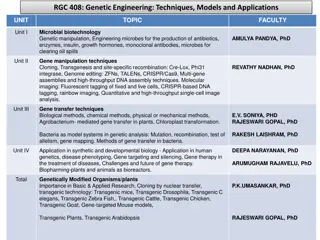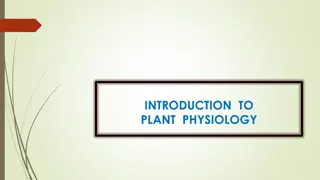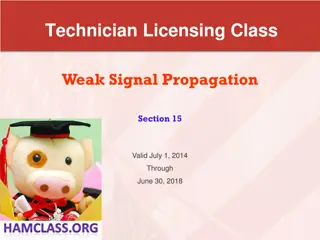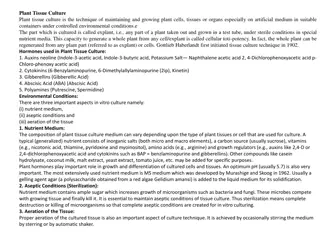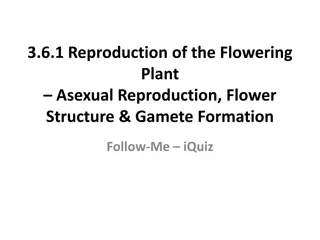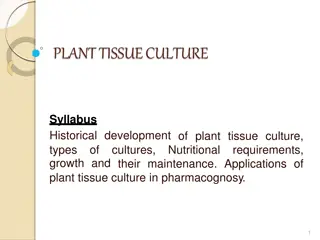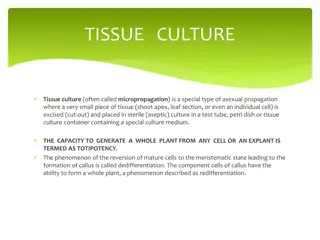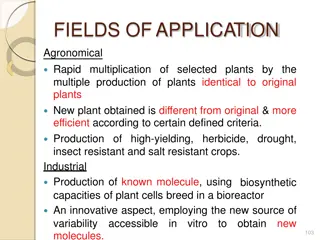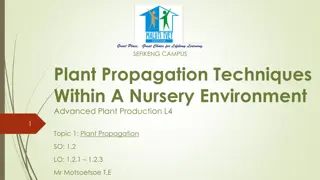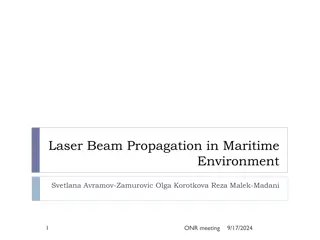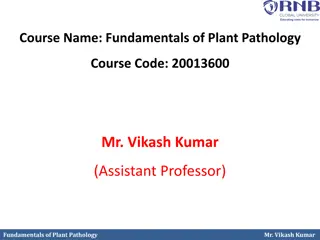Modern Plant Propagation Technique: Micropropagation Explained
Micropropagation, also known as tissue culture propagation, is a cutting-edge method used to efficiently produce genetically identical plants. Explore the process from selection of explant to acclimatization, along with its advantages in plant conservation and commercial production.
Download Presentation

Please find below an Image/Link to download the presentation.
The content on the website is provided AS IS for your information and personal use only. It may not be sold, licensed, or shared on other websites without obtaining consent from the author.If you encounter any issues during the download, it is possible that the publisher has removed the file from their server.
You are allowed to download the files provided on this website for personal or commercial use, subject to the condition that they are used lawfully. All files are the property of their respective owners.
The content on the website is provided AS IS for your information and personal use only. It may not be sold, licensed, or shared on other websites without obtaining consent from the author.
E N D
Presentation Transcript
Micropropagation by Suvasree Sahu
Introduction Micropropagation, also known as tissue culture propagation or in vitro propagation, is a modern plant propagation technique used to produce large numbers of genetically identical plants (clones) from a small piece of plant tissue. This method involves growing plant cells, tissues, or organs in a controlled environment, such as a sterile nutrient medium, under controlled temperature, light, and humidity conditions.
Process Selection of Explant: A small piece of the plant, known as the explant, is carefully selected from a healthy and disease-free mother plant. The explant can be a shoot tip, leaf, node, or any other suitable plant tissue. Sterilization: The explant is then surface-sterilized to remove any microorganisms that might be present on its surface. This is a crucial step to avoid contamination of the tissue culture. Culture Initiation: The sterilized explant is placed on a nutrient medium containing a mixture of minerals, vitamins, sugars, and plant growth regulators (hormones). The medium provides all the necessary nutrients for the explant to grow and develop.
Continue Shoot Multiplication: Under appropriate conditions, the explant starts to grow and forms multiple shoots. The growth is usually rapid due to the presence of specific plant growth hormones like cytokinins. Rooting: Once enough shoots are formed, they can be separated and transferred to another nutrient medium to promote root growth. Auxins, another type of plant growth hormone, are typically used to induce root formation. Acclimatization: After rooting, the young plantlets are transferred to a greenhouse or controlled environment where they gradually adapt to natural conditions. This step is essential to prepare the plants for life outside the controlled laboratory environment.
Advantages Rapid production of a large number of genetically identical plants. The ability to produce disease-free and pest-free plants. Preservation and propagation of rare or endangered plant species. Clonal multiplication of plants with desirable traits, such as disease resistance or improved productivity. Faster turnover time for commercial production of plants.



